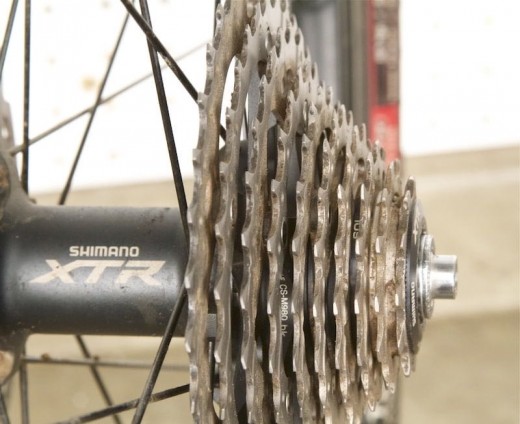Biking With Bad Knees

In a previous job I spent a lot of time on my knees and today I pay the price. For a long time I endured knee pain when riding my bicycle, climbing stairs or sometimes when I walked. Yet I participated in an bicycling event to raise funds and awareness for the National Multiple Sclerosis Society in which I biked for one hundred and fifty miles each time. To train for the event, I biked around 1,000 miles over the course of three months. How do I do it?
On his web site Dr. Weil recommends glucosamine and exercise as a treatment for joint pain. In my case I did not find glucosamine to be effective, so I have concentrated on exercise.
Medication
Mild over-the-counter pain medications like Tylenol or ibuprofen are useful within certain parameters. Once I was with a group of riders on a two-day, one hundred and fifty mile fundraising bike ride. On the morning of the second day a rider asked if anyone had any pain medication. Everyone had a pain medication to offer the rider, including me.
However, the problem with pain medication is that it creates a temporary barrier between your pain-detecting nerve endings and your brain. Pain is an important signal that you may be damaging your body. For this reason, it's best to use pain medications sparingly.
Observation and Exercise
My doctor said that one way to combat joint pain of any kind is to strengthen the muscles around the joint so that you can ease the pressure with strength. To ease the stress on my knees from cycling and from daily life, I adopted strategies through observation and experimented with exercise.
I observed the positions of the different parts of my leg and foot when I experienced pain. By avoiding those relative foot and leg positions while cycling I was able to avoid pain during the ride, though there was a sacrifice of speed. In other situations I observed that if I climbed stairs when I landed on each step with the ball of each foot climbing stairs was not painful. To land my feet in that position consistently, I observed, it was necessary for me to run up the stairs.
When applying the foot position idea to cycling, I observed where in the rotation of the pedal my knee or knees would hurt me. I found that if I kept my ankles loose instead of rigid when accelerating my ankles absorbed a lot of the pressure, sparing my knees. Pedaling with a relaxed ankle strengthened muscles in my legs that enabled me to ride longer distances with little or no pain. Riding long distances, in turn, increased my general fitness making it easier for me to avoid knee pain in daily life.
The key for me to avoid knee pain was learning to relax. I learned that the more tension I had in my body, the more likely it was that my knees would hurt. For me, the keys to relative freedom from knee pain were observation, strategizing, exercise and relaxation.
Keep Your Knees Inside
To avoid damaging your knees while cycling, try to remain seated as much as you can and keep your knees inside. That is, when each knee rises to the top of the rotation of the crank, it should almost brush the top tube. If your knees are tilting outward you are placing possibly harmful lateral stress on the joint.

Pace
The pace of your pedaling on your bicycle, meaning the rotations per minute of your front sprocket, may help reduce knee pain while bicycling. I found that adopting a lower pace on level surfaces decreased pain, but when climbing hills a faster pace served me better.
Please note that pace is not speed. If on level surfaces your chain is usually in the middle range of your rear sprocket cassette, you can shift up and attain the same speed while pedaling more slowly.
This content is accurate and true to the best of the author’s knowledge and does not substitute for diagnosis, prognosis, treatment, prescription, and/or dietary advice from a licensed health professional. Drugs, supplements, and natural remedies may have dangerous side effects. If pregnant or nursing, consult with a qualified provider on an individual basis. Seek immediate help if you are experiencing a medical emergency.
© 2009 Tom rubenoff








